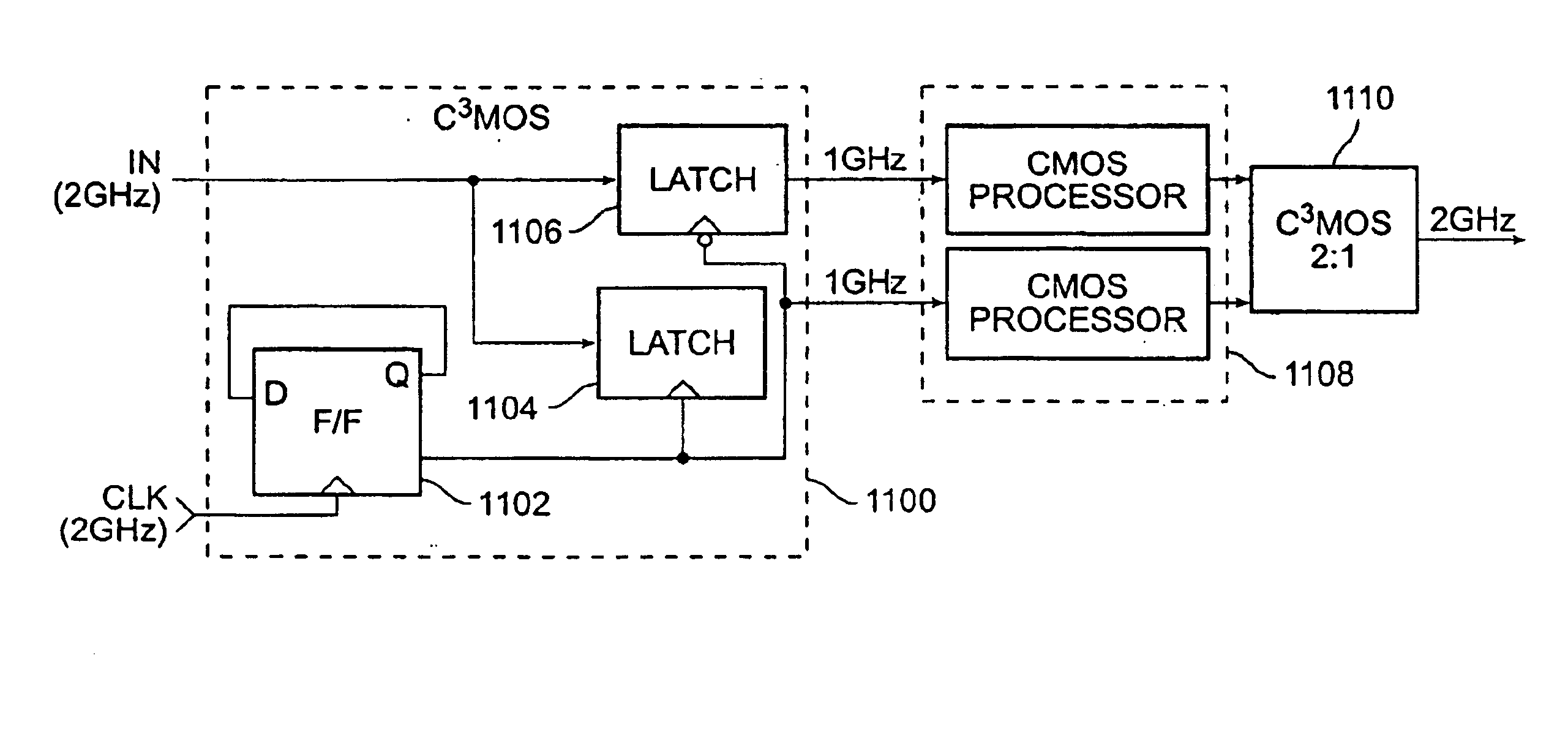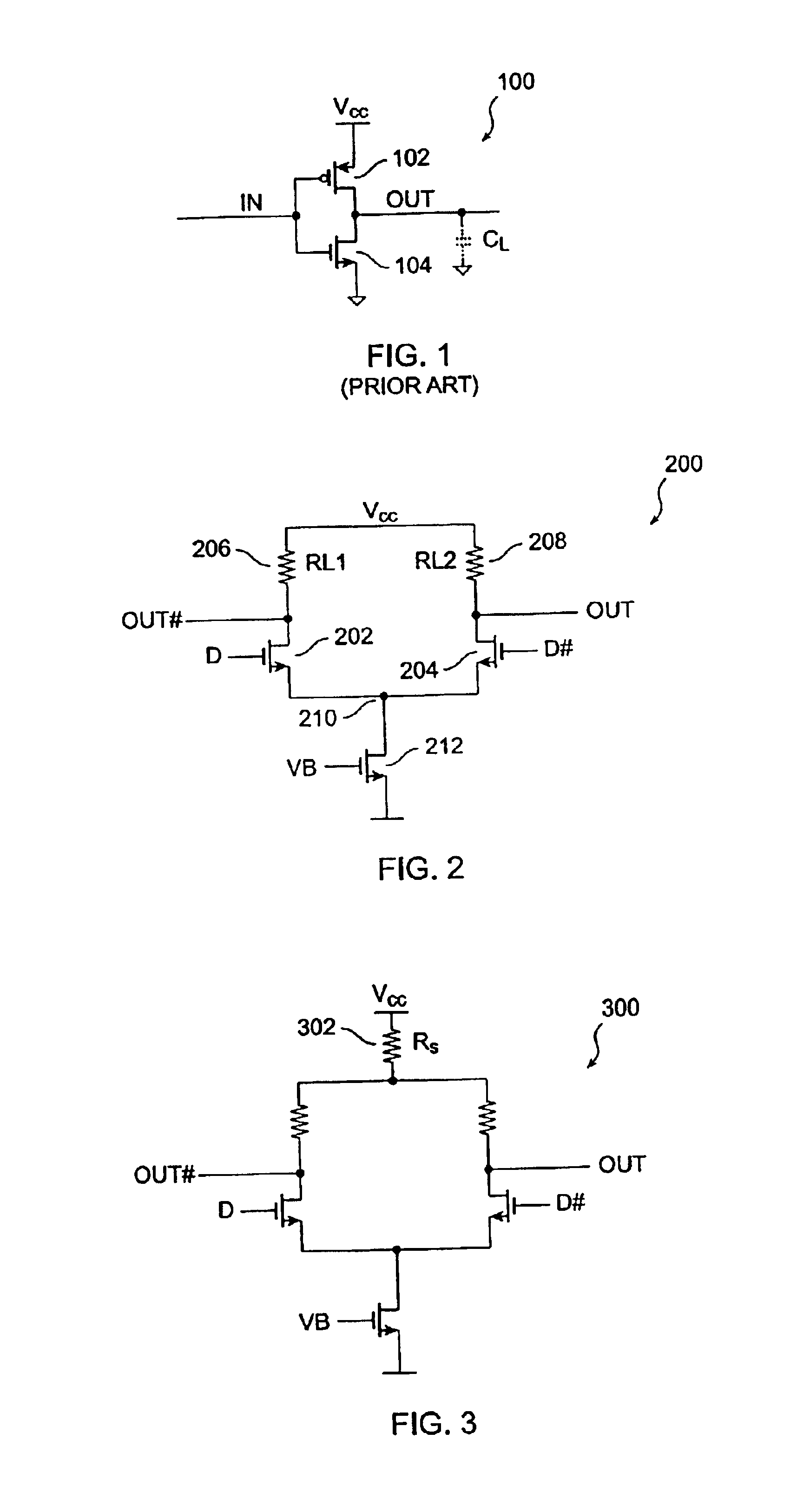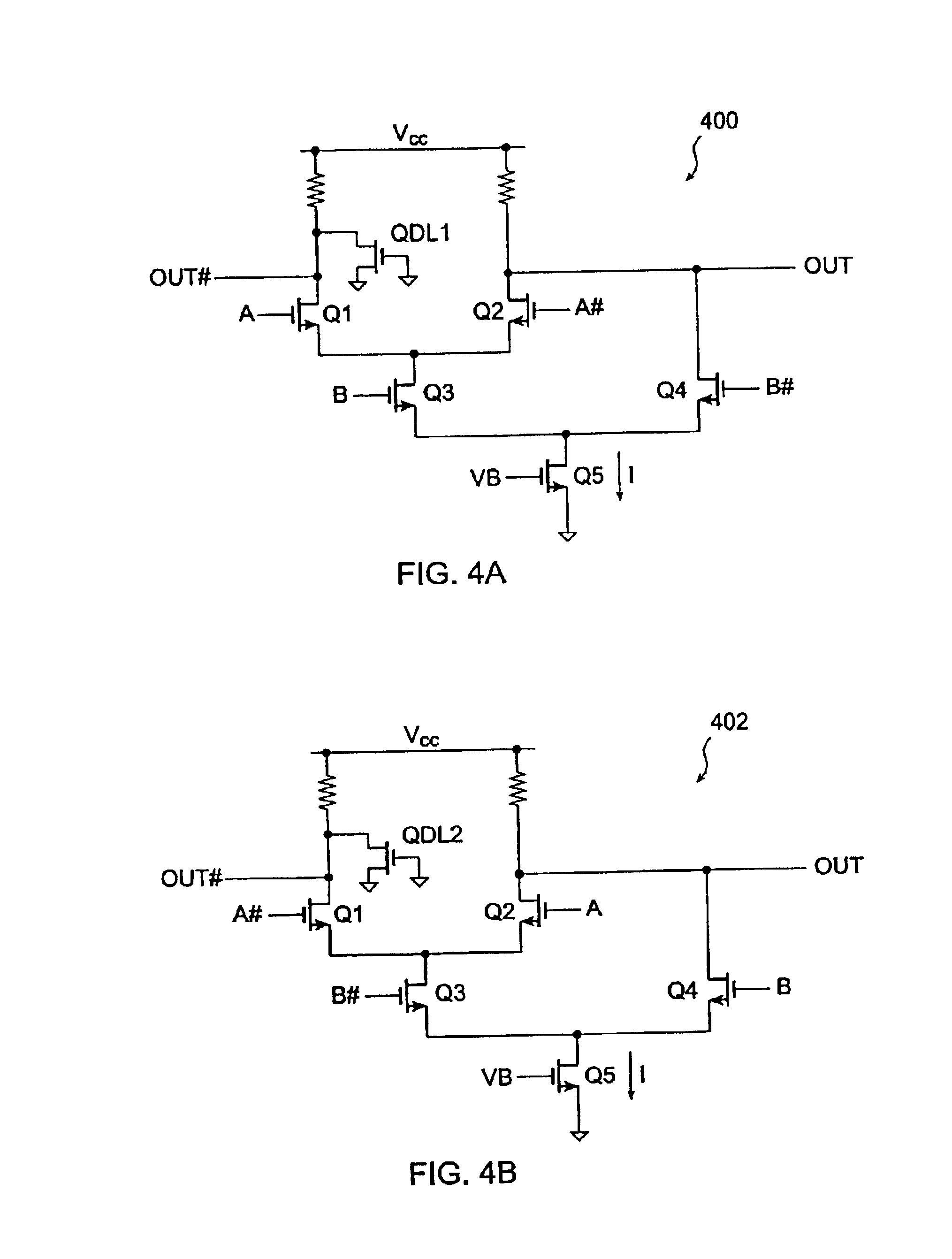Current-controlled CMOS circuit using higher voltage supply in low voltage CMOS process
a technology of cmos circuit and current supply, which is applied in the field of integrated circuits, can solve the problems of low switching speed of conventional cmos logic, near zero static power consumption of cmos logic, and limited speed of cmos logic family, so as to achieve high switching speed, dissipate static current, and maximize the effect of speed of operation
- Summary
- Abstract
- Description
- Claims
- Application Information
AI Technical Summary
Benefits of technology
Problems solved by technology
Method used
Image
Examples
Embodiment Construction
[0028]The present invention provides ultra high-speed logic circuitry implemented in silicon complementary metal-oxide-semiconductor (CMOS) process technology. A distinction is made herein between the terminology “CMOS process technology” and “CMOS logic.” CMOS process technology as used herein refers generally to a variety of well established CMOS fabrication processes that form a field-effect transistor over a silicon substrate with a gate terminal typically made of polysilicon material disposed on top of an insulating material such as silicon dioxide. CMOS logic, on the other hand, refers to the use of complementary CMOS transistors (n-channel and p-channel) to form various logic gates and more complex logic circuitry, wherein zero static current is dissipated. The present invention uses current-controlled mechanisms to develop a family of very fast current-controlled CMOS (or C3MOS™) logic that can be fabricated using a variety of conventional CMOS process technologies, but that...
PUM
 Login to View More
Login to View More Abstract
Description
Claims
Application Information
 Login to View More
Login to View More - R&D
- Intellectual Property
- Life Sciences
- Materials
- Tech Scout
- Unparalleled Data Quality
- Higher Quality Content
- 60% Fewer Hallucinations
Browse by: Latest US Patents, China's latest patents, Technical Efficacy Thesaurus, Application Domain, Technology Topic, Popular Technical Reports.
© 2025 PatSnap. All rights reserved.Legal|Privacy policy|Modern Slavery Act Transparency Statement|Sitemap|About US| Contact US: help@patsnap.com



